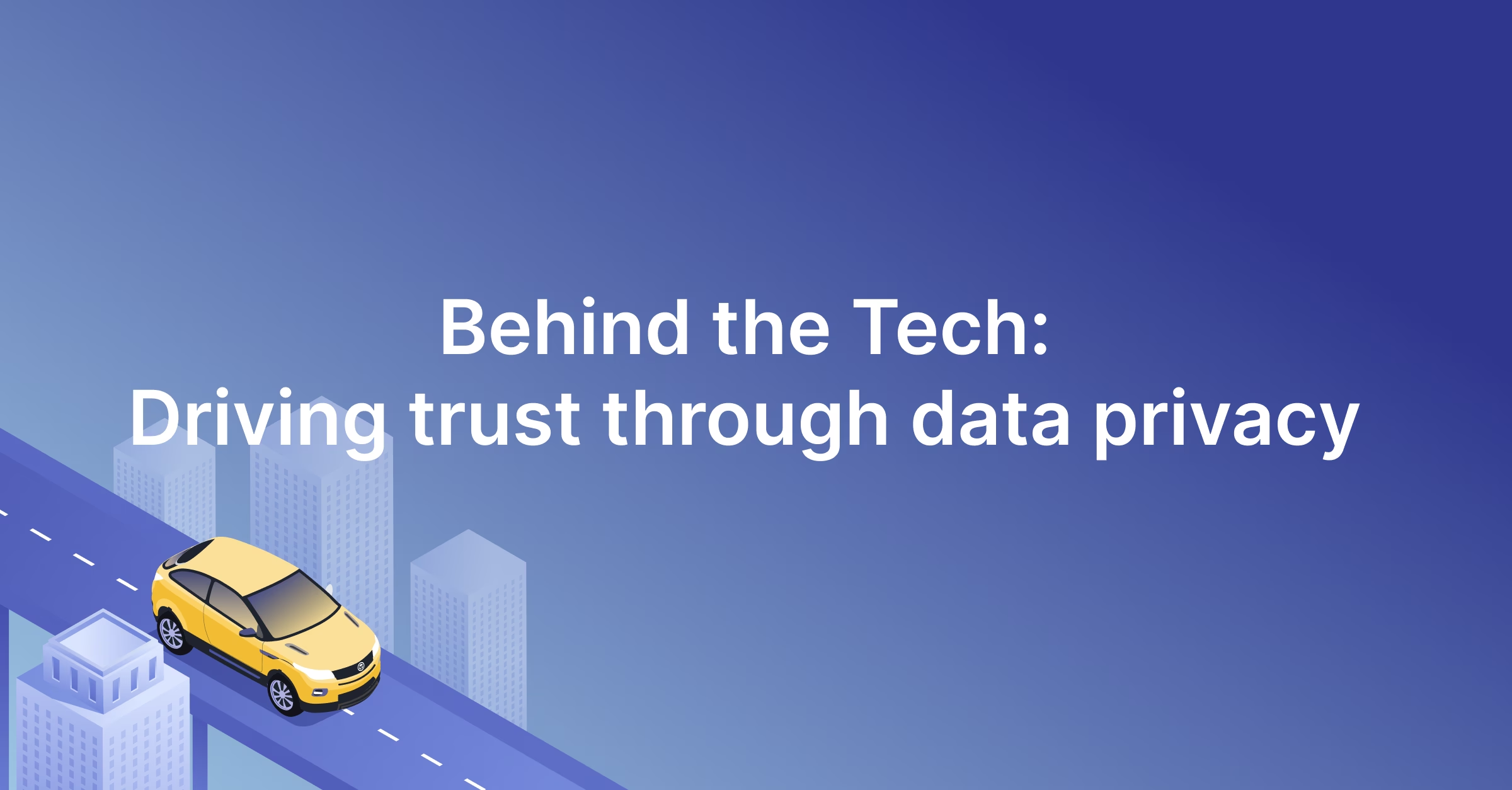TL;DR:
- Sustainable mobility is on the rise globally, with a focus on reducing emissions and shifting towards electric vehicles.
- Technology plays a crucial role in advancing sustainable mobility, with apps and software services improving user experience and accessibility.
- Partnerships between technology companies, governments, and communities are key to scaling sustainable mobility solutions.
- Examples of sustainable mobility strategies include electromobility, collective transport, and low-mobility societies. Powerful user experiences are essential for achieving optimum levels of adoption for sustainable travel options.
What is sustainable mobility?
Sustainable mobility refers to transportation systems and solutions that meet travel and commuting needs while minimizing negative environmental, economic, and public health impacts. At its core, sustainable mobility emphasizes reducing greenhouse gas emissions, conserving resources, and promoting equitable access to transportation.
This includes adopting renewable energy sources, reducing reliance on private vehicle ownership, developing more transit and pedestrian-friendly infrastructure, and integrating technology into mobility systems to make these optimizations happen faster. Sustainable mobility is built on three pillars:
- Environmental Sustainability: Reducing the environmental impact of transportation systems.
- Social Sustainability: Ensuring that mobility solutions are inclusive and benefit everyone.
- Economic Sustainability: Creating transportation systems that are financially viable and support economic growth in the long term.
How are we acting to achieve sustainable mobility?
Governments worldwide are pushing for low-emission transportation systems by enacting a range of policies and mandates, including:
- The European Union’s Green Deal: The EU aims to cut emissions by 55% by 2030 and make the region climate neutral by 2050. Sustainable transport plays a key role in these developments, with key initiatives including expanding EV infrastructure and promoting rail over air travel for shorter distances.
- The UK’s Net Zero Policy: This policy aims to help the country achieve net zero carbon emissions by 2050. Transportation is a critical focus area, with the government committing to phase out the sale of new petrol and diesel cars by 2030 and expand EV charging networks nationwide. Other initiatives include increasing public transport, cycling, and walking infrastructure investments and encouraging sustainable aviation fuels to decarbonize the aviation sector.
- The 2025 Federal Transportation Improvement Program (FTIP): The 2025 FTIP focuses on advancing transportation projects and has allocated $38.8 billion for transportation investments over six years. It emphasizes investments in reducing greenhouse gas emissions through expanded public transit systems, enhanced cycling and pedestrian infrastructure, and the deployment of zero-emission vehicles. The program also prioritizes upgrading roadways and bridges to improve safety and efficiency while supporting sustainable freight movement.
- The Bipartisan Infrastructure Law (BIL): Enacted in 2021, the Bipartisan Infrastructure Law allocates $1.2 trillion to modernize the nation’s infrastructure, with significant investments targeting sustainable transportation and energy systems. A key focus of the law is accelerating the adoption of EVs by funding the installation of 500,000 EV charging stations nationwide and offering incentives for EV manufacturing and adoption. The BIL also prioritizes grid modernization to support the increased demand for clean energy, integrating renewable energy sources, and enhancing grid resilience against climate-related disruptions.
Axios reports that some climate and infrastructure policies enacted under the Biden administration have an "uncertain future" in the upcoming Trump administration. We'll continue to update this article to reflect new developments as they come.
Understanding the goal and impact of sustainable mobility
Our existing transportation systems have been influenced by the dawn of early automotive technology — like the gas-powered cars of the 19th century — and a long-standing culture surrounding the prestige of private car ownership.
What followed was the development of roads, cities, regulations, and economic incentives that positioned fossil fuel-powered transportation as a necessity for convenience, access, and speed.
Sustainable mobility focuses on improving this system to make it cleaner, safer, and more accessible while reducing its environmental footprint. Achieving these goals requires a combination of policy initiatives and technology-driven solutions:
- Lower greenhouse gas emissions: Sustainable mobility aims to reduce transportation-related carbon emissions by promoting electrification, public transit, micromobility, and walkable cities.
- Improved air quality and public health: EV adoption and clean energy initiatives aim to reduce air pollution from vehicle emissions, which directly results in healthier communities.
- Reduced traffic congestion: Sustainable mobility aids with improving urban planning, helping local governments optimize road usage with improved public transportation and better technology integrations for commuters to plan their mobility routes more efficiently.
- More equitable and accessible transport: In an effort to improve the adoption of low-emission mobility options, sustainable mobility efforts ensure that these systems are available to all communities at a realistic and affordable price.
- Decarbonized urban freight: Investing in sustainable mobility means making the shift toward clean energy-powered passenger and fleet vehicles and optimizing logistics through smart mobility solutions for more efficient routes in growing cities to cut carbon emissions.
- Stronger and more resilient grids: As a result of sustainable mobility projects, particularly around electrification and renewable energy integration, the transition toward more modern and stable grids have become a priority. The Bipartisan Infrastructure Law, for example, invests in grid modernization to support electrified transport.
A new wave of apps and software services specifically focused on advancing sustainable mobility goals through connected car data. These apps, in partnership with other players in the mobility ecosystem, can help bridge gaps in our infrastructure so we can decarbonize quickly and get as much mode shifts as possible without having to wait decades or longer. The convenience and accessibility of technology can help spur consumer-driven behavioral shifts, which ultimately makes the most impact.
“We’re now at a point where the momentum [of sustainable mobility] has tipped, nobody can stop it at this point,” says Alex Mitchell, creator of the $ustainable Mobility newsletter. “Even if Elon Musk somehow said, ‘I’m shutting down Tesla. I’m not building EVs anymore,’ the EV revolution will continue.”

I think that the entrance of tech companies into the mobility space has, for the better, really pushed government, private actors, and everyday citizens to rethink how we make transportation decisions, our mobility options, access outcomes, and so on.
— Warren Logan, Partner at Lighthouse Public Affairs
🔖 Read our interview with Warren about siloes in our sustainable mobility ecosystem
What is sustainable mobility technology?
Sustainable mobility technology includes digital tools and software that support low-emission, efficient, and accessible transportation. This includes software applications and platforms powered by connected car data.
Partnerships between sustainable mobility technology companies, local governments, and communities are necessary to roll out efforts at scale. The Energy Research and Social Science journal identified three narratives that can inform effective policy and action for sustainable mobility:
- Electromobility
- Collective transport
- Low-mobility societies.
Transportation systems today benefit from the development of solutions targeting these specific narratives. Here are a few examples of what that technology can look like for each:
Solutions to advance sustainable mobility ecosystems
Although integrations have become more commonplace in the mobility space since the rise of companies like Uber, the idea of a “winner take all” approach with public and private partnerships has become unrealistic.
“Maybe internet search might be a winner take most or all, but not mobility, partly because of the variety of our needs each day,” Mitchell says.
Partnership-driven software strategies widen the reach of environmental problem-solving.
These partnerships pool together more resources and expertise to implement better travel options optimized for more consumer accessibility, convenience, and trust.
Here are four ways apps and services are improving the adoption of sustainable mobility solutions:
- Providing a better user experience
- Hyperlocalized features for more accessible travel
- More mode shift convenience
- Giving back to the grid with electric vehicles
💡 User experience
Third-party EV apps have emerged to fill this user experience gap by using vehicle telematics to help drivers manage and analyze specific functionalities critical to the EV ownership experience — like optimizing EV charging and generating battery reports.
Casey Donahue, founder of the smart charging app, Optiwatt, joined Smartcar for a webinar on smart charging where he explained how user experience impacts customer involvement in sustainability efforts.
As automakers focus on manufacturing vehicles, Donahue says that innovation from consumer apps and developer platforms creates solutions that focus on user preferences, convenience, and confidence in the EV industry.
🗺 Hyperlocalization
A reliable mobility ecosystem offers greater support at a local level to fit the unique needs of nearby communities.
Integrations must consider city-specific limitations and travel behavior can help mobility businesses offer more flexibility to meet local conditions. For example, Carge is a mobile app that uses vehicle telematics to help drivers find and book available charging stations across Europe.
Local communities also use software partnerships to develop community-driven programs that offer low-income residents access to sustainable transportation. In 2020, the Los Angeles Cleantech Incubator partnered with the Housing Authority of the City of Los Angeles and EV car sharing software, Envoy, to launch the Rancho San Pedro Electric Car Share which allows residents in a community of 450 subsidized apartments to rent EVs for $3 an hour.
🚘 Mode shift
Mitchell is car-free by choice and notes the difficulty of patching together mobility options with different reliability levels, payment methods, and data systems. He says there’s an opportunity for connected ecosystems that give individuals similar travel flexibility and accessibility even without private car ownership.
He describes this as a possible “bundle of services that cover car sharing, ride-hail, scooters and bikes that cost $3,000 or $4,000 in instead of $10,000 a year [for private car ownership].”
Software and cloud platforms allow mode shift across cities with more convenience and local context.
One example is how Superpedestrian’s vehicle intelligence helps them customize vehicle behavior to meet city requirements for geofenced zones and parking across the United States, Europe, and the Middle East. Turo also uses cloud software to simplify how vehicle owners can become car sharing hosts and decrease overall dependency on buying a personal vehicle for travel.
🔋 Managed EV charging
Close to 70% of utilities in the US have plans to roll out a managed EV charging program within the next two years. They’re doing this by working with software partners to communicate with Wi-Fi-enabled EVs and reduce dependency on complicated hardware installations.
For example, better software integrations for EVs are a necessary component for modernizing our grids. Demand response firm, Rolling Energy Resources, uses EV APIs to help utilities study EV charging patterns within a territory and shape better demand response initiatives.
With access to information like EV charging locations, charging status, and battery levels, utilities can alert residents and remotely stop charging during peak hours.
The future of sustainable mobility is connected
From EV charging to car sharing and urban planning, mobility applications and services are challenging the way we think about sustainable travel.
There’s a lot to do before newer modes of mobility become affordable and equally advocated for across different demographics. But a well-rounded and collaborative approach to technology development leads to opportunities and incentives to help us get there.
As ICF’s Stacy Noblet tells us in a previous article about the state of EV charging and mobility ecosystems, “there is a sense that the rising tide raises all ships, and if you can get it right, it’s going to benefit the industry as a whole.”






